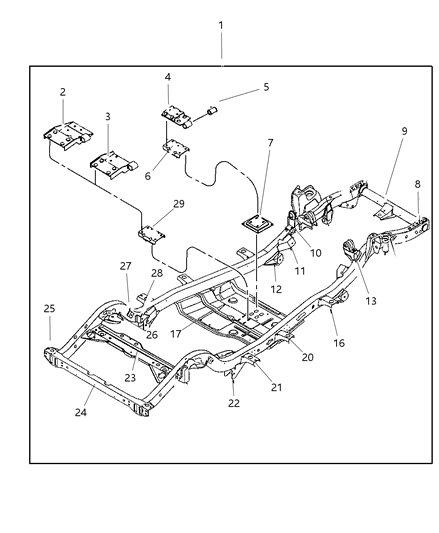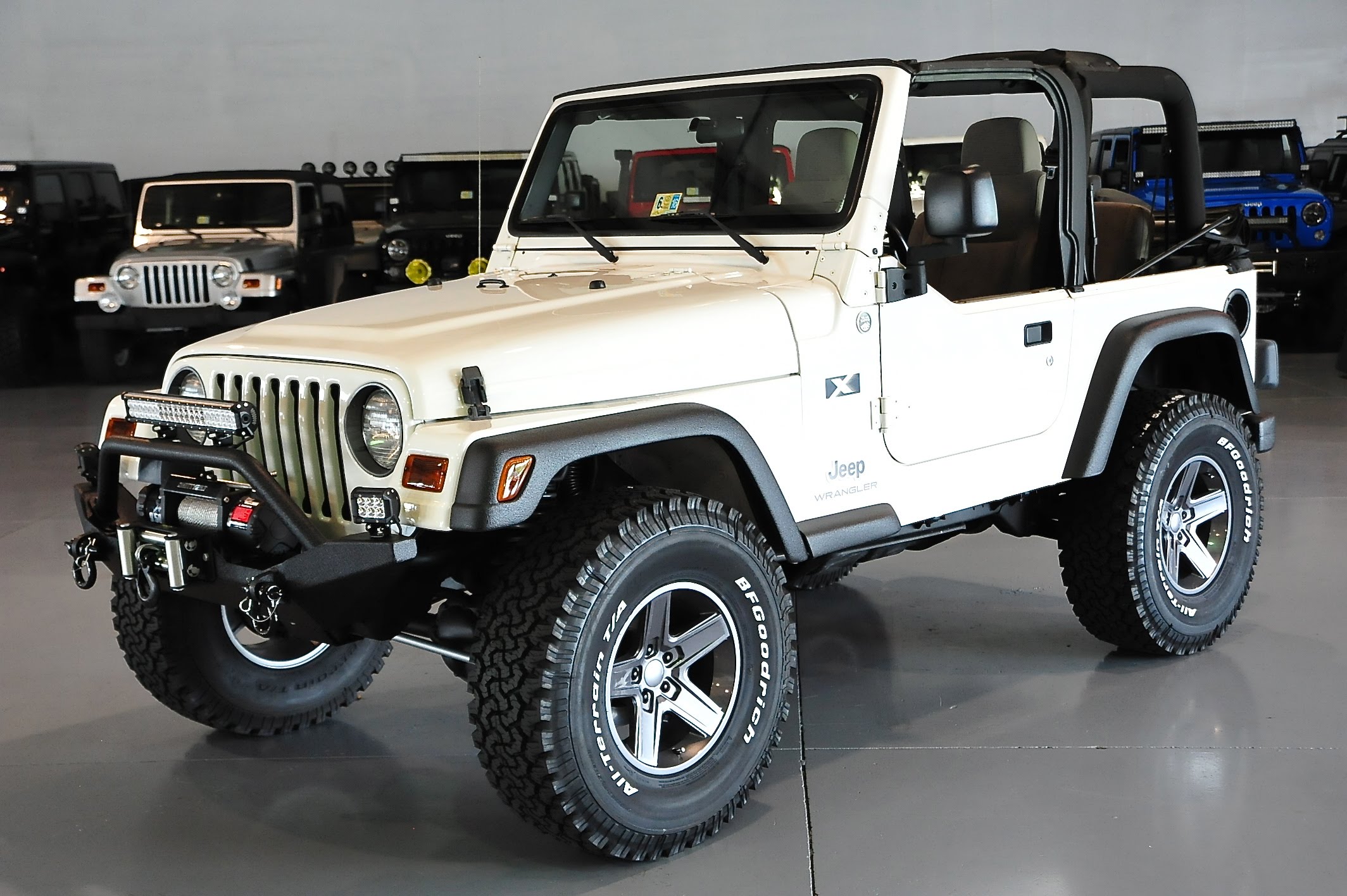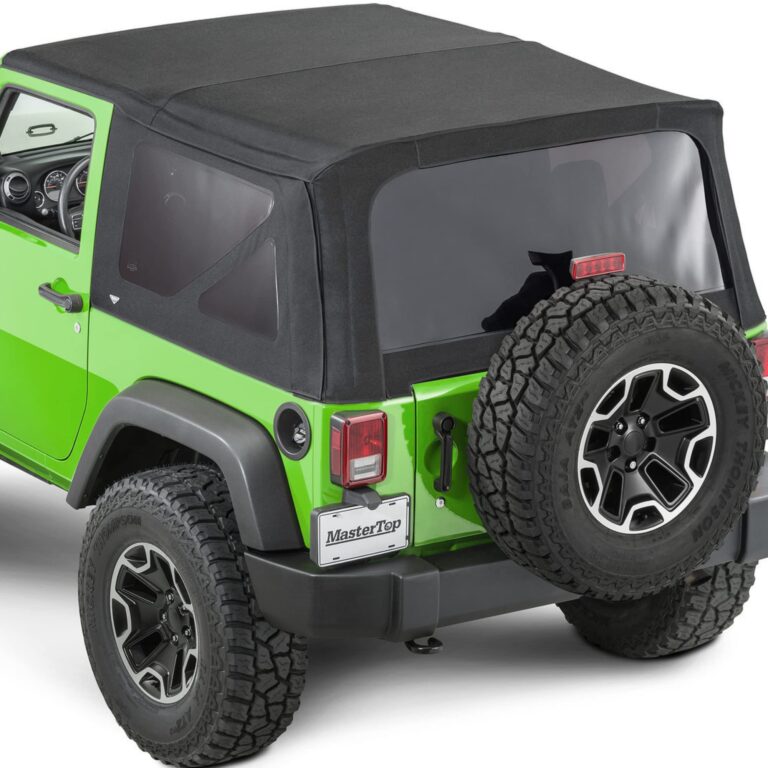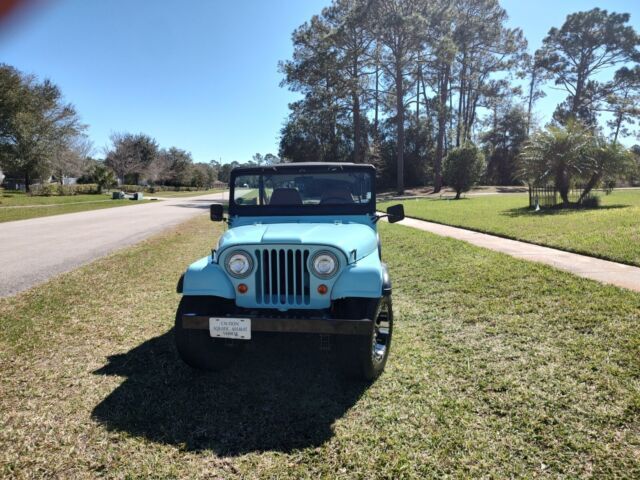1997 Jeep Wrangler Frame For Sale: Your Comprehensive Guide to Restoring the Foundation
1997 Jeep Wrangler Frame For Sale: Your Comprehensive Guide to Restoring the Foundation jeeps.truckstrend.com
The iconic Jeep Wrangler TJ (1997-2006) holds a special place in the hearts of off-road enthusiasts and casual drivers alike. Known for its rugged simplicity, legendary off-road capability, and timeless design, the TJ remains a highly sought-after vehicle. However, like any aging vehicle, the passage of time and exposure to harsh environments often take their toll, particularly on the structural integrity of the frame. This is where the concept of a "1997 Jeep Wrangler Frame For Sale" becomes critically relevant, offering a lifeline to cherished TJs suffering from the dreaded "frame rot" or accident damage.
This comprehensive guide will delve into everything you need to know about sourcing, inspecting, and preparing a 1997 Jeep Wrangler frame, turning a potentially daunting task into a manageable and rewarding project. Whether you’re undertaking a full frame-off restoration, repairing accident damage, or building a custom off-road rig, understanding the nuances of a replacement frame is paramount.
1997 Jeep Wrangler Frame For Sale: Your Comprehensive Guide to Restoring the Foundation
Why a 1997 Jeep Wrangler Frame? Understanding the Demand
The demand for replacement 1997 Jeep Wrangler frames isn’t just a niche market; it’s a necessity driven by a common Achilles’ heel of the TJ platform: rust. While the TJ is lauded for its robust drivetrain and simple mechanics, the open-C channel frame, particularly in areas exposed to road salt, moisture, and debris, is highly susceptible to corrosion.
Common Frame Weak Points on a TJ:
- Control Arm Mounts: Both upper and lower control arm mounts, especially the rear lower mounts, are notorious for severe rust and even complete detachment.
- Skid Plate Mounting Points: The area where the transfer case skid plate bolts to the frame often traps moisture and debris, leading to significant deterioration.
- Rear Crossmember: The section above the gas tank is another common rust spot.
- Body Mounts: Particularly the rear-most body mounts.
- Front Bumper Mounts: These can rust out, compromising bumper integrity.
- Spring Perches and Shock Mounts: Rust can weaken these critical suspension points.

For many TJ owners, the engine, transmission, axles, and body might be in perfectly good shape, but a severely compromised frame renders the vehicle unsafe or beyond practical repair. This creates a strong market for solid, used frames, allowing enthusiasts to breathe new life into their beloved Jeeps without the expense of buying an entirely new vehicle. A frame swap is often a more economical and satisfying solution than attempting extensive, and often futile, frame patch repairs on a severely compromised original.
What to Look For: Inspecting a Used Frame

Purchasing a used frame is a significant investment of time and money, so thorough inspection is crucial. Don’t rush the process, and if possible, inspect the frame in person.
Critical Inspection Points:
-
Rust Assessment: This is the most critical step.

- Tap Test: Use a small hammer or a pointed tool to gently tap along the frame, especially in the common rust areas mentioned above. A solid "thunk" indicates good metal, while a dull "thud" or a piercing sound suggests rot.
- Visual Inspection: Look for flaking rust, holes, soft spots, or areas that appear to have been patched or covered up. Pay close attention to the inside of the C-channel where rust often starts unseen.
- Control Arm Mounts: Carefully inspect the welds and surrounding metal for cracks, severe rust, or signs of previous repair.
- Skid Plate Area: Check the mounting holes and the surrounding frame for integrity.
- Body Mounts: Ensure they are solid and not rusted through.
-
Straightness and Accident Damage:
- Visual Scan: Look down the frame rails from both the front and rear. Do they appear straight and parallel? Look for kinks, bends, ripples, or unusual bulges, which can indicate accident damage.
- Measurements (if possible): If you have access to frame specifications, take diagonal measurements between key points to verify the frame isn’t twisted or bent. Even simple cross-measurements can reveal significant issues.
- Welds: Examine all factory welds. Look for signs of non-factory welds, which could indicate previous repairs from accident damage or rust. Poorly executed welds can be a major structural liability.
-
VIN Matching and Legality:
- Frame VIN: All Jeep Wrangler frames have a Vehicle Identification Number (VIN) stamped on them, typically on the passenger side frame rail near the front control arm mount or behind the front wheel.
- Verification: Ensure the VIN is legible and matches any documentation provided by the seller. This is crucial for legal reasons, especially if you plan to register the vehicle with the new frame. A clear bill of sale stating the frame’s VIN is highly recommended.
- Theft Prevention: Verify the VIN hasn’t been tampered with.
-
Included Components:
- Ask what comes with the frame. Sometimes, a seller will include items like the steering box, track bar mount, shock mounts, or even the original brake lines and fuel lines. While not essential, these can save you time and money during the swap.
Sourcing Your 1997 Jeep Wrangler Frame: Where to Buy
Finding the right frame requires patience and knowing where to look.
-
Online Marketplaces:
- Pros: Wide reach, often the first place sellers list frames, competitive pricing.
- Cons: Shipping can be expensive and complicated, difficult to inspect in person, potential for misrepresentation.
- Examples: eBay, Facebook Marketplace, dedicated Jeep forums (e.g., JeepForum.com, WranglerForum.com classifieds).
-
Salvage Yards / Auto Recyclers:
- Pros: Often the best source for local pickup, potentially lower prices, ability to inspect in person.
- Cons: Inventory can be hit-or-miss, frames might not be cleaned or prepped.
- Tips: Call ahead to inquire about TJ frames specifically. They often have vehicles that were totaled due to body damage but have solid frames.
-
Specialty Jeep Parts Dealers / Restoration Shops:
- Pros: Frames are often thoroughly inspected, sometimes sandblasted and coated, higher quality assurance.
- Cons: Generally the most expensive option.
- Tips: Search for "Jeep Wrangler parts" or "Jeep restoration" shops in your region.
-
Aftermarket New Frames: While the article focuses on "For Sale" (implying used), it’s worth noting that companies like Throttle Down Kustoms or Dynatrac offer brand new, stronger frames for the TJ. These are significantly more expensive but offer superior quality and rust resistance. Consider them if budget allows and you want the ultimate foundation.
The Purchase Process & Logistics
Once you’ve found a promising frame, here’s what to consider during the purchase:
- Pricing: Frame prices vary wildly based on condition, location, and included components. Expect to pay anywhere from a few hundred dollars for a "fixer-upper" to several thousand for a meticulously cleaned and prepped frame.
- Shipping vs. Local Pickup:
- Local Pickup: Always preferred if feasible. It allows for in-person inspection and avoids significant freight costs. You’ll need a truck or a trailer capable of handling a long, heavy item.
- Freight Shipping: If shipping is necessary, obtain multiple quotes. Frames are considered oversized freight. Ensure the seller is willing and able to properly palletize the frame for transport. Factor in liftgate services if you don’t have a forklift at the delivery location.
- Legalities: Insist on a bill of sale that clearly states the frame’s VIN, the seller’s information, and the purchase price. This document is essential for proving ownership and for any future DMV interactions regarding the frame swap.
- Negotiation: Don’t be afraid to negotiate, especially if you find minor imperfections or if the seller is eager to move the item.
Preparing Your New (Used) Frame for Installation
Receiving your "new" frame is just the beginning. Proper preparation will ensure its longevity and make the installation process smoother.
-
Cleaning & Surface Preparation:
- Degreasing: Remove any oil, grease, or grime with a heavy-duty degreaser.
- Rust Removal: Wire brushing, grinding, and even sandblasting are common methods. Sandblasting is highly effective for reaching all crevices and preparing the surface for coating. If sandblasting isn’t an option, use rust converters on stubborn areas after mechanical removal.
- Internal Cleaning: Use a pressure washer or air compressor to flush out dirt and debris from inside the C-channel rails.
-
Rust Prevention & Coating:
- Priming: Apply a high-quality epoxy primer or rust-inhibiting primer. Products like POR-15 are popular for their excellent rust encapsulation properties.
- Top Coat: Follow with a durable chassis paint or undercoating. Consider a two-part epoxy paint for maximum protection.
- Internal Coating: For ultimate protection, consider using an internal frame coating spray that can be applied with a long wand to coat the inside of the frame rails.
-
Reinforcement (Optional but Recommended):
- Given the TJ frame’s susceptibility to rust and bending under hard off-road use, many owners opt to reinforce critical areas.
- Frame Stiffeners: Plates that weld to the outside of the C-channel, increasing rigidity.
- Control Arm Skid Plates: Weld-on skids that protect and strengthen the control arm mounts.
- Newer Model Crossmembers: Some enthusiasts upgrade to later TJ rear crossmembers or aftermarket units for improved strength.
-
Final Inspection: After cleaning and coating, perform another thorough inspection. New cracks or issues might become apparent once the frame is clean and bare. Address any discoveries before beginning the swap.
Installation Considerations
While a full frame swap is a significant undertaking, having a solid, prepared frame makes the process far more rewarding. Key steps generally involve:
- Removing the body from the old frame.
- Transferring the engine, transmission, transfer case, axles, suspension, steering, and braking components from the old frame to the new one.
- Mounting the body onto the new frame.
- Reconnecting all systems (electrical, fuel, brake lines).
- A professional alignment is highly recommended after completion.
Price Table: 1997 Jeep Wrangler Frame For Sale (Estimated)
This table provides estimated price ranges for a used 1997 Jeep Wrangler frame, based on typical market conditions and condition. Prices can vary significantly based on location, seller, and market demand.
| Condition Category | Estimated Price Range (USD) | Common Issues / Description | Ideal Use Case |
|---|---|---|---|
| Poor / Salvage | $300 – $700 | Significant rust, holes in common areas, potential bends, may require extensive repair/fabrication. | For skilled fabricators, parts donor, or very low-budget projects. |
| Fair / Needs Work | $700 – $1,500 | Moderate surface rust, minor pinholes in non-critical areas, some rust around control arm mounts but repairable. | For DIYers willing to sandblast, repair minor rust, and apply protective coating. |
| Good / Minor Rust | $1,500 – $2,500 | Minimal surface rust, no significant holes, all mounting points solid, may have some flaking paint. | Excellent candidate for cleaning, blasting, and immediate coating. Ready for swap. |
| Excellent / Restored | $2,500 – $4,500+ | Professionally sandblasted, primed, and coated; no rust, straight, possibly reinforced. | Turn-key solution for a high-end restoration or a quick frame swap. Premium price. |
| New Aftermarket | $4,000 – $7,000+ | Brand new, heavier gauge steel, often stronger than OEM, no rust, perfect straightness. (For comparison, not "used") | For ultimate strength, longevity, and a no-compromise build. |
Note: Prices do not include shipping costs, which can range from $300 to $1000+ depending on distance and carrier.
Frequently Asked Questions (FAQ)
Q1: Do Jeep Wrangler frames have VINs?
A1: Yes, all Jeep Wrangler TJ frames have a VIN stamped on them, typically on the passenger side frame rail near the front control arm mount or sometimes further back. It’s crucial to verify this VIN.
Q2: Can I use a frame from any TJ year (1997-2006) for my 1997 Wrangler?
A2: Generally, yes. All 1997-2006 TJ Wrangler frames are dimensionally similar and largely interchangeable. However, there can be minor differences in small brackets, fuel tank skid plate mounting points, or brake line routing depending on the exact year and model (e.g., some differences between 4-cylinder and 6-cylinder models, or early vs. late TJs). Always double-check before purchasing, but major components will align.
Q3: How much does a professional frame swap cost?
A3: The cost for a professional frame swap can vary widely based on labor rates, shop expertise, and what needs to be transferred or replaced. Expect labor costs alone to range from $3,000 to $8,000 or more, not including the cost of the frame or any additional parts.
Q4: Is it worth buying a rusty frame and trying to repair it?
A4: It depends on the extent of the rust and your fabrication skills. Minor surface rust is easily dealt with. However, frames with significant holes, compromised mounting points, or deep pitting that affects structural integrity are often not worth the time and expense to repair correctly, unless you are an experienced welder/fabricator with access to a shop. It’s often more cost-effective and safer to start with a solid foundation.
Q5: What’s the difference between a 1997 and a 1998 Jeep Wrangler frame?
A5: For the frame itself, there are generally no significant structural differences between a 1997 and a 1998 TJ Wrangler frame that would prevent interchangeability. Any minor differences would likely be in small, non-structural brackets or bolt holes for specific accessories.
Conclusion
A solid frame is the backbone of any vehicle, and for the beloved 1997 Jeep Wrangler, it’s the key to years of continued adventure. While finding and preparing a replacement frame might seem like a daunting task, it’s a highly rewarding endeavor that can save a cherished TJ from the scrapyard. By understanding the common pitfalls, knowing what to look for during inspection, and diligently preparing your "new" foundation, you’re not just replacing a part – you’re preserving a legend. With careful planning and execution, your 1997 Jeep Wrangler will be ready to tackle trails and turn heads for many more miles to come.





